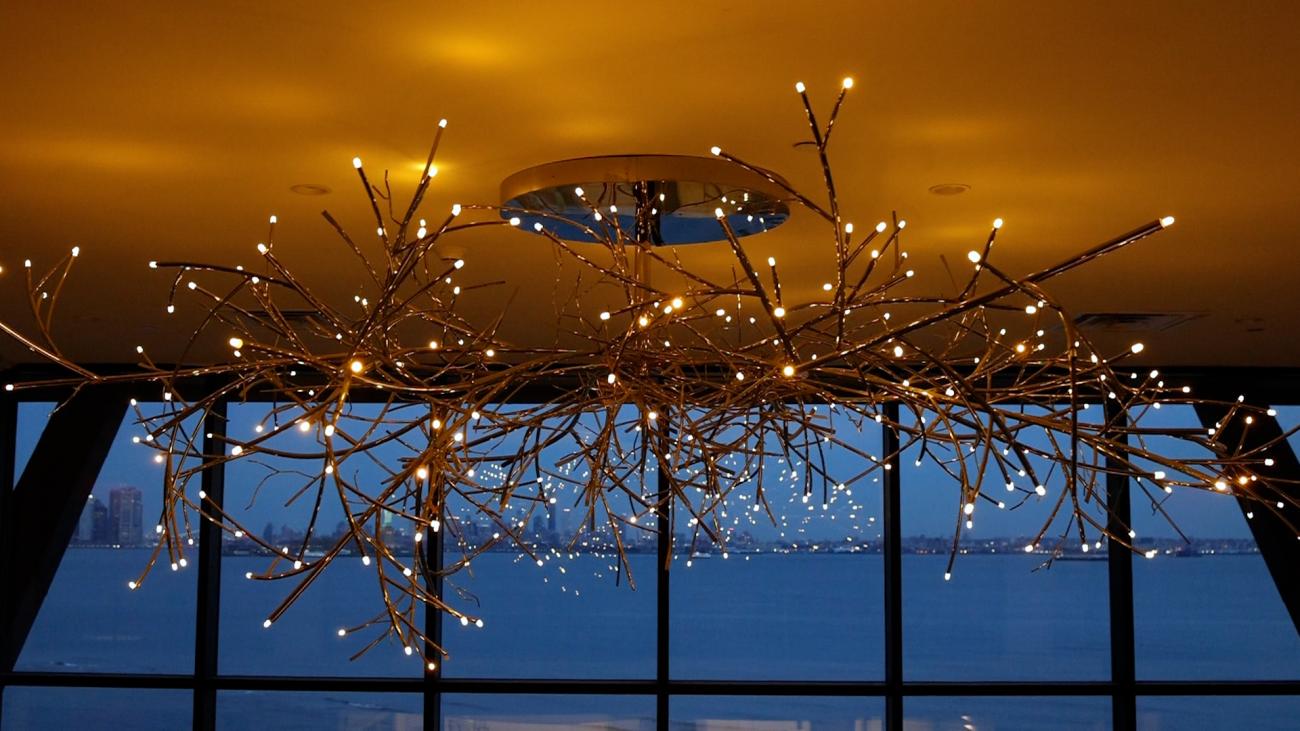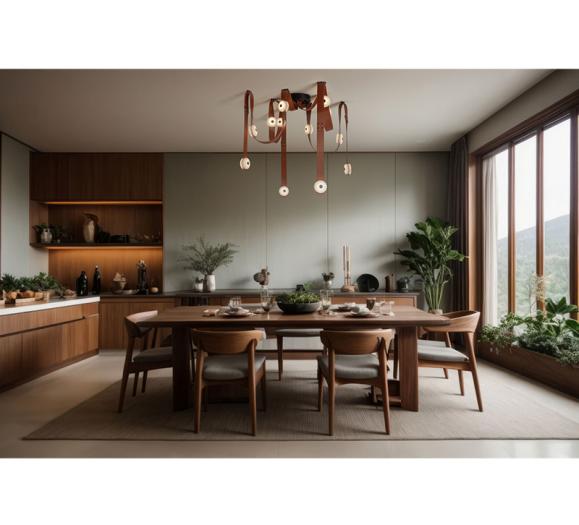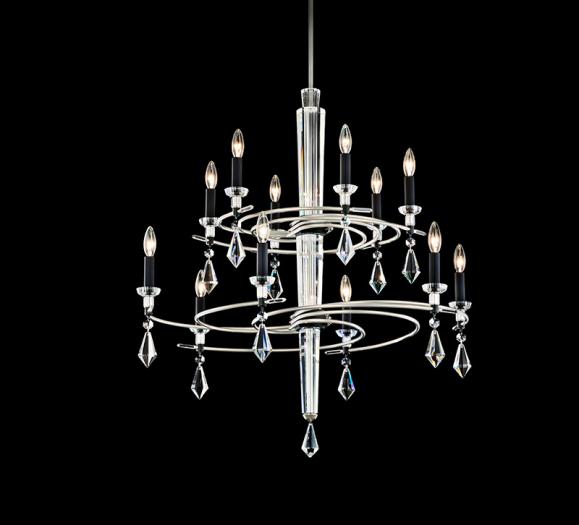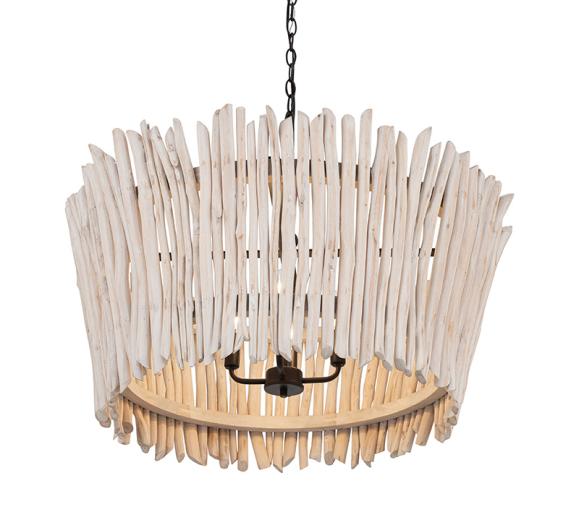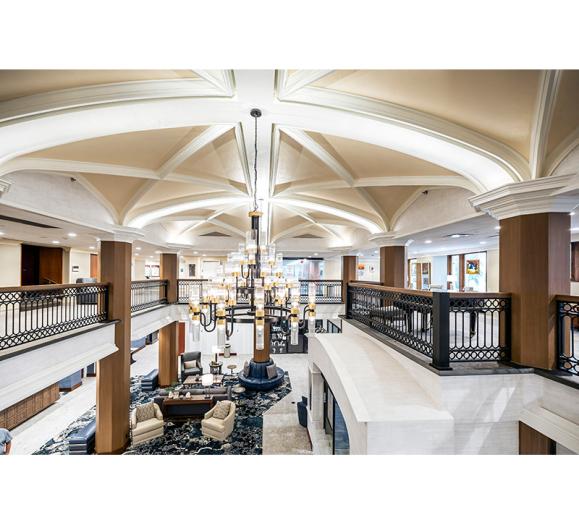The correct lighting in a space is often a critical design factor, both aesthetically and functionally. What do you do when you have gone through all of your lighting resources and haven’t found the exact style, size or illumination needed for a residential or commercial design project? You turn to those resources that provide custom options, whether it entails adjusting a piece that’s already in a line or creating something brand new from a concept drawing or conversation. Turning to lighting makers specializing in custom fixtures not only provides customers with the exact dimensions, illumination and style they need, they can also inform future line collections as well.
For some lighting manufacturers, custom work is the foundation of their manufacturing capabilities, allowing them to provide an out-of-the-box solution for architects, designers and builders as well as helping them discover new style options and even technologies that inform their off-the-shelf collections.
“There are different ways to approach custom lighting,” says Max Cohen, Director of Hospitality Marketing for Meyda/2nd Ave. Lighting, based in upstate New York. “We can manipulate a fixture we’ve already created or we can do a custom piece from your concept.” That concept can be anything from CAD drawings to a napkin sketch to a conversation/collaboration. “Our design team in house will work with the ownership team to develop new ideas,” Cohen continues. “However, that’s the least efficient way to operate. We do really well with customer-supplied inspiration [and something to look at] and translating that into a real fixture.”
Creating custom lighting fixtures can give lighting makers, such as Meyda and Hammerton, for example, a design edge too.
“Because of our willingness to do custom work, we can be on the forefront of design,” says Paul Verbecky, General Manager at Hammerton. “We’re so in tune with what is happening in the industry because people are coming to us with ideas. We’re willing to take on any challenge.” According to Nancy Shott, VP of Marketing for Hammerton, which comprises three divisions — Hammerton Studio, Hammerton Heritage and Hammerton Signature — much of its lighting starts as a custom or a modified version of pieces that are in the line, particularly in the Signature and Heritage divisions of the company. Often, those custom pieces also end up in the company’s off-the-shelf collections.
Solutions Made Easy
While the thought of developing specific lighting for a project can seem daunting, if you’re working with a company built on a foundation of custom work, it’s easier than one would think, says Shott. “If you work with a company that’s knowledgeable, custom can be quite painless,” she notes. Hammerton employs engineers to fete out design and functionality as well as skilled artisans who can take a project from concept to finished product reasonably quickly.
Other advantages of working with custom lighting manufacturers can include speed of development as well as cost savings. And it doesn’t take much to get a project started. “Hammerton does so well with a napkin sketch, a doodle on a piece of paper,” says Verbecky. “We can turn around a real quote relatively quickly — 24 to 48 hours — along with pricing and construction considerations.”
Meyda’s Cohen says his company’s typical custom project can be turned around — from concept to completion — in about 12 weeks, with intricate or large-scale pieces taking up to 20 weeks. Considering the time it takes to have lighting imported, the timeline for custom is relatively quick. “If there’s an urgent matter that needs immediate attention, we work with people to meet their needs,” Cohen continues. “And sometimes it can be less expensive than importing, when you consider the cost of freight to import larger pieces. We’ve gained business because freight cost has outweighed the benefits of importing.”
Meyda has also been able to provide more stable lead times to customers with custom projects, and attention to quality is tantamount. Because Meyda is a domestic manufacturer, tweaks are easier as well.
The Right Staff
Like Meyda, Hammerton is also a U.S. lighting manufacturer, based in Utah, and has all of the equipment and staff needed for a robust custom lighting operation. Twenty percent of its staff is mechanical and industrial designers. “We’re really an engineering company that has elected to build lighting fixtures,” says Shott.
In addition, the company has all of the equipment in house, including a glass hot shop, the largest in the U.S. at this point, says Verbecky, where they employ 20 plus glass artisans and blow 10,000 to 15,000 pounds of glass per week. “We have some of the most amazing artisans you’ll ever meet,” he continues. You can’t talk about these products without talking about the makers. That’s the secret.” The company works hard to cultivate an environment where these artisans feel valued for their contributions and get to stretch their creativity. “We don’t have a lot of redundancy. Everything and everyone makes a difference,” Verbecky adds.
Meyda/2nd Ave Lighting, for which 70 percent of the lighting the company makes starts as custom fixtures, is also fortunate that it has retained much of its talented staff through COVID, says Cohen. While COVID did throw a curveball, it also allowed the company to revamp some of its systems and get people trained in a way that was needed for custom projects.
“We are very fortunate to be in an area where there are ambitious young people with a lot of energy,” he says. “We are happily in the third generation with some of our employees and looking forward to the fourth generation. The team we have is pretty permanent.”
Beyond training employees, one other challenge custom lighting manufacturers run into is access to the build sites where the lighting is being installed. The earlier this can happen, and these companies can interact with builders, architects and electricians, the better, says Hammerton’s Verbecky.
Functional Fixes
Earlier access to those installing lighting can mitigate installation issues and also save money. “In one case, an electrician bid $70,000 to $80,000 for installation alone, for example. When we talked through his pain points that put the cost that high, it became apparent we could make small tweaks to the fixtures to change the way we installed,” he said. “With new mount kits, the first install took 30 minutes and subsequent fixtures took five minutes. This one small tweak lowered the installation cost to $35,000. The reality was this space needed a custom product.”
It’s imperative, Verbecky notes, to have access to the trades as early in the design process as possible, which some designers might not realize.
Design Edge
The ability to deliver functionality aside, developing custom lighting also gives these lighting makers an edge when it comes to overall understanding of where design is headed for their off-the-shelf collections. At Meyda, Cohen notes, unless there’s an NDA on the design, once the company designs new lighting, it’s on the website for inspiration for others. In addition, working in custom lighting, whether residential or commercial, has given the company access to newer technologies it might not have otherwise invested in yet. For example, because of its custom lighting projects, Meyda has rolled out large lighting installations using organic LED or OLED. “They deliver the same frequency of light as you would get in the natural world, but they are still being fine-tuned,” says Cohen. “They’re high-cost and there are only so many different shapes to the material.” However, when Meyda had the opportunity to do a large install — a fixture that was 420 inches wide and weighs 7,000 pounds — using OLED, the company jumped at the chance. “It speaks to our capabilities, and it is a jaw dropper,” he adds.
Hammerton has also been able to get ahead of the trends technologically and design-wise through their custom program. “We can be on the forefront of design,” says Verbecky. “From color palettes to shapes to asymmetry, Hammerton has been challenging the design standard for years. We lead the charge.” Much of that ability to lead the charge — a focus on biophilic design and materials for example before it has become more mainstream — puts Hammerton out front from a design perspective, in its custom work and in its Hammerton Studio collection.
“When people think of bespoke lighting, they think of pretty lights, something they’ve never seen before,” says Hammerton’s Shott. “The rubber hits the road though in how it will integrate with the environment, how it will be installed and how it will work with a lighting control system.”
While bespoke conjures something unique from an aesthetic point of view, it’s the details and functionality that make these custom, cutting-edge light fixtures so valuable.



